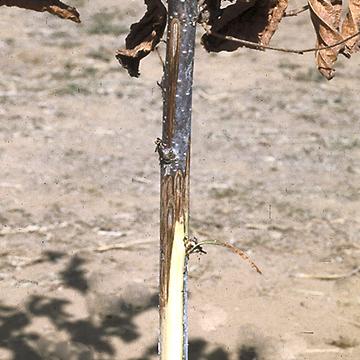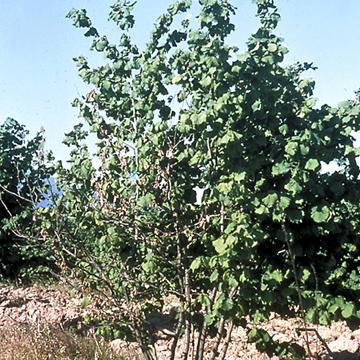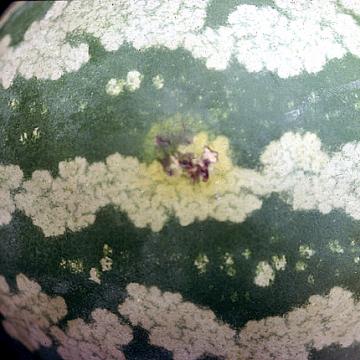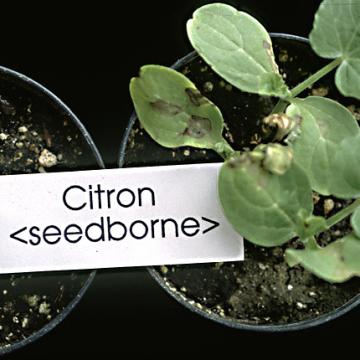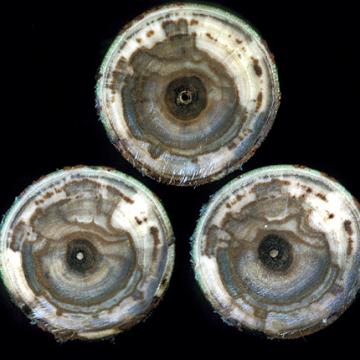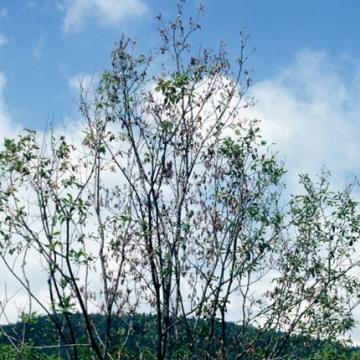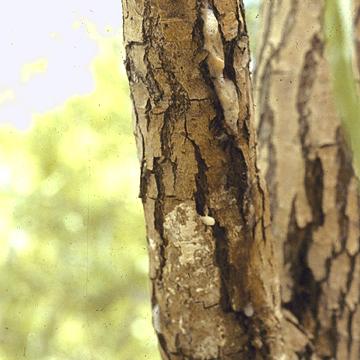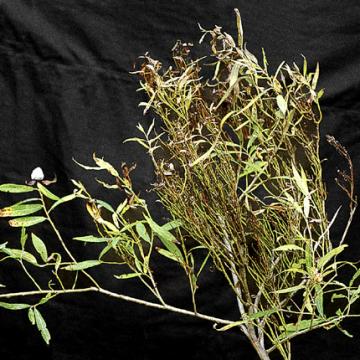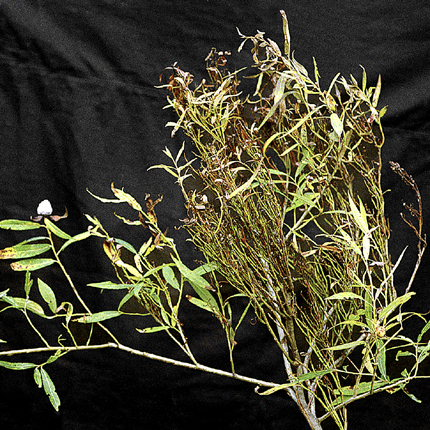DISEASE: Bacterial blight
HOST: Hazelnut
Diseased young tree with discoloration of the cambium. Dieback of young twigs and branches is characteristic. Other typical symptoms are bud and twig necrosis and small, angular or round, water-soaked leaf spots.
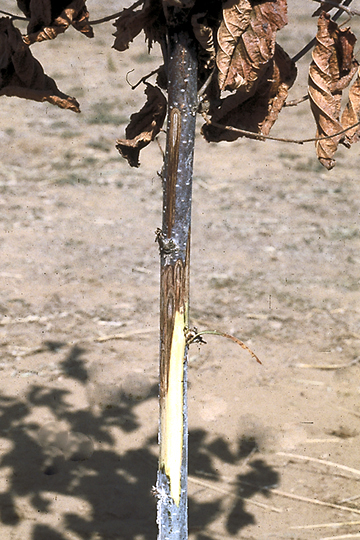
Bacterial blight | Hazelnut
DISEASE: Bacterial blight
HOST: Hazelnut (Corylus americana)
PATHOGEN: Xanthomonas arboricola pv. corylina
SOURCE: J. Pscheidt
DISEASE: Bacterial canker
HOST: Hazelnut
Primary symptoms are failure of buds to break and withering and death of new foliage in spring. Dead leaves remain attached to limbs after normal leaf fall.
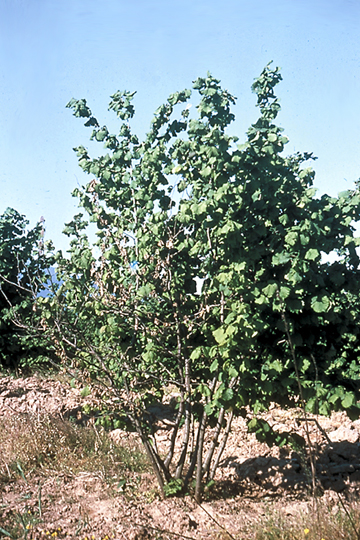
Bacterial canker | Hazelnut
DISEASE: Bacterial canker
HOST: Hazelnut (Corylus americana)
PATHOGEN: Pseudomonas syringae pv. avellanae
PATHOGEN SYNONYM: Pseudomonas avellanae
SOURCE: P. Psalidas
DISEASE: Bacterial fruit blotch
HOST: Citron melon
Citron rind with fruit blotch.
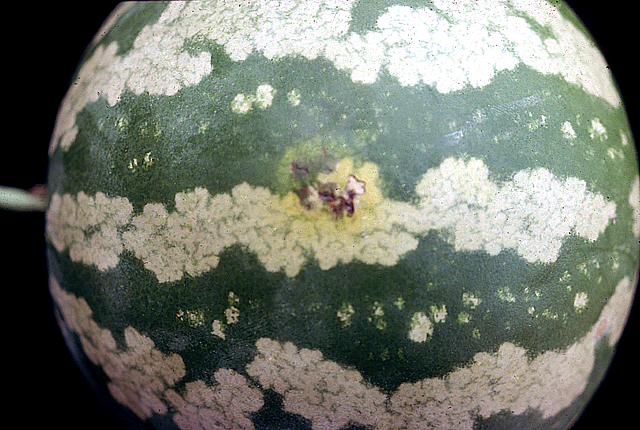
Bacterial fruit blotch | Citron melon
DISEASE: Bacterial fruit blotch
HOST: Citron melon (Citrullus lanatus var. citroides)
PATHOGEN: Acidovorax citrulli
PATHOGEN SYNONYM: Acidovorax avenae subsp. citrulli
SOURCE: R. Gitaitis
DISEASE: Bacterial fruit blotch
HOST: Citron melon
Leaf infection stage of fruit blotch.

Bacterial fruit blotch | Citron melon
DISEASE: Bacterial fruit blotch
HOST: Citron melon (Citrullus lanatus var. citroides)
PATHOGEN: Acidovorax citrulli
PATHOGEN SYNONYM: Acidovorax avenae subsp. citrulli
SOURCE: R. Gitaitis
DISEASE: Bacterial wilt and dieback
HOST: Willow
Cross sections of the characteristic "watermark stain" of diseased wood. Wilt and dieback occur as disease progresses.
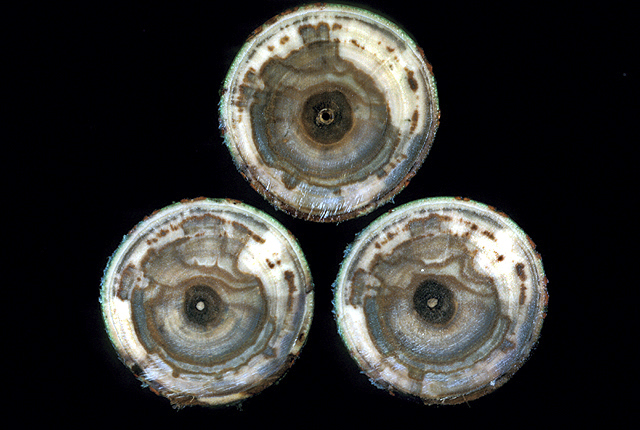
Bacterial wilt and dieback | Willow
DISEASE: Bacterial wilt and dieback
HOST: Willow (Salix sp.)
PATHOGEN: Brenneria salicis
PATHOGEN SYNONYM: Erwinia salicis
SOURCE: Y. Sakamoto, M. Goto
DISEASE: Bacterial wilt and dieback
HOST: Willow
Severely diseased tree with dieback symptoms.

Bacterial wilt and dieback | Willow
DISEASE: Bacterial wilt and dieback
HOST: Willow (Salix sp.)
PATHOGEN: Brenneria salicis
PATHOGEN SYNONYM: Erwinia salicis
SOURCE: Y. Sakamoto, M. Goto
DISEASE: Slime flux
HOST: Willow
Foam at site of infection. Slime fluxes are common but the causal agent has not been identified.
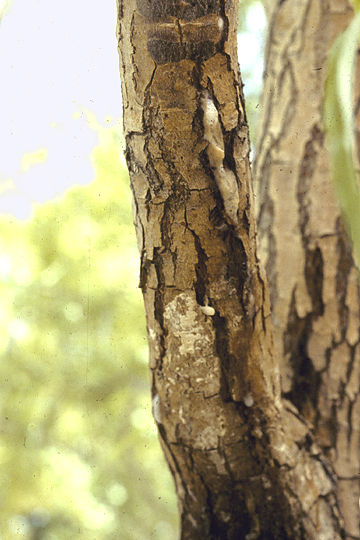
Slime flux | Willow
DISEASE: Slime flux
HOST: Willow (Salix sp.)
PATHOGEN: Causal agent unknown
SOURCE: S. Thomson


